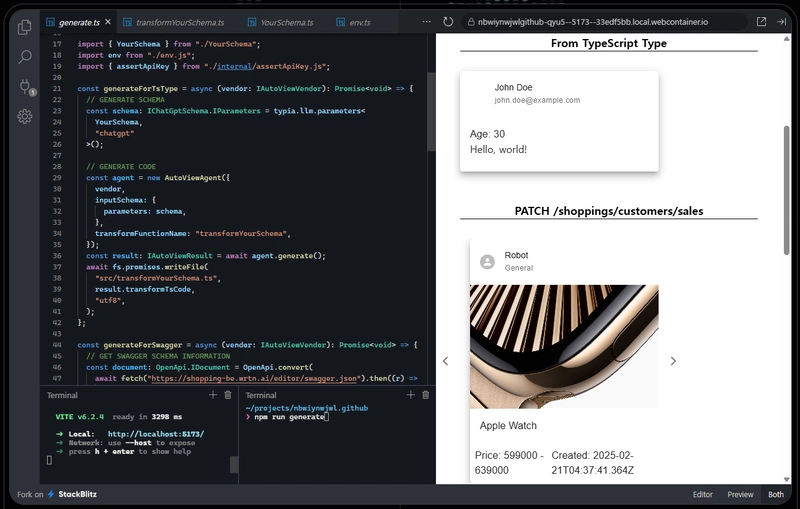React Hooks as Superpowers: If You Were a Marvel Avenger
Imagine for a moment—you’re not just a developer. You’re an Avenger. But instead of battling Thanos, your battlefield is the browser, and your weapon? React Hooks. Today, we’re about to dive into a fun and powerful analogy where I’ll map popular React Hooks to the superpowers of Marvel’s mightiest heroes. Because honestly? Once you master Hooks, you do start feeling like you’ve unlocked superhuman coding abilities. useState — Iron Man’s Arc Reactor "Powering the suit... and the app!" Just like Tony Stark's Arc Reactor powers his Iron Man suit, useState powers your React components with dynamic data. What It Does: useState allows you to store local state inside a functional component. Why It Feels Like a Superpower: With just a few lines, you can create dynamic, interactive experiences without touching any class components! import { useState } from 'react'; function Reactor() { const [powerLevel, setPowerLevel] = useState(100); return ( Power Level: {powerLevel}% setPowerLevel(powerLevel - 10)}>Use Power ); } Every click? A new blast of power, just like Tony tinkering mid-battle. useEffect — Doctor Strange’s Time Stone "Controlling time and side effects!" Doctor Strange manipulates time, loops through realities, and triggers actions across timelines—pretty much what useEffect lets you do inside your app. What It Does: useEffect handles side effects: API calls, timers, subscriptions, or directly manipulating the DOM. Why It Feels Like a Superpower: You get to control when something happens—after render, when data changes, only once, etc. It’s like casting spells based on dimensions you define! import { useEffect, useState } from 'react'; function TimeManipulator() { const [seconds, setSeconds] = useState(0); useEffect(() => { const timer = setInterval(() => setSeconds(s => s + 1), 1000); return () => clearInterval(timer); // Clean up spell ✨ }, []); return Time traveled: {seconds} seconds; } Careful, Strange... infinite loops are real in React too.

Imagine for a moment—you’re not just a developer.
You’re an Avenger.
But instead of battling Thanos, your battlefield is the browser, and your weapon? React Hooks.
Today, we’re about to dive into a fun and powerful analogy where I’ll map popular React Hooks to the superpowers of Marvel’s mightiest heroes.
Because honestly? Once you master Hooks, you do start feeling like you’ve unlocked superhuman coding abilities.
useState — Iron Man’s Arc Reactor
"Powering the suit... and the app!"
Just like Tony Stark's Arc Reactor powers his Iron Man suit, useState powers your React components with dynamic data.
What It Does:
useStateallows you to store local state inside a functional component.Why It Feels Like a Superpower:
With just a few lines, you can create dynamic, interactive experiences without touching any class components!
import { useState } from 'react';
function Reactor() {
const [powerLevel, setPowerLevel] = useState(100);
return (
<div>
<p>Power Level: {powerLevel}%</p>
<button onClick={() => setPowerLevel(powerLevel - 10)}>Use Power</button>
</div>
);
}
Every click? A new blast of power, just like Tony tinkering mid-battle.
useEffect — Doctor Strange’s Time Stone
"Controlling time and side effects!"
Doctor Strange manipulates time, loops through realities, and triggers actions across timelines—pretty much what useEffect lets you do inside your app.
What It Does:
useEffecthandles side effects: API calls, timers, subscriptions, or directly manipulating the DOM.Why It Feels Like a Superpower:
You get to control when something happens—after render, when data changes, only once, etc.
It’s like casting spells based on dimensions you define!
import { useEffect, useState } from 'react';
function TimeManipulator() {
const [seconds, setSeconds] = useState(0);
useEffect(() => {
const timer = setInterval(() => setSeconds(s => s + 1), 1000);
return () => clearInterval(timer); // Clean up spell ✨
}, []);
return <p>Time traveled: {seconds} seconds</p>;
}
Careful, Strange... infinite loops are real in React too.










































































































































































![[The AI Show Episode 144]: ChatGPT’s New Memory, Shopify CEO’s Leaked “AI First” Memo, Google Cloud Next Releases, o3 and o4-mini Coming Soon & Llama 4’s Rocky Launch](https://www.marketingaiinstitute.com/hubfs/ep%20144%20cover.png)


















































































































![[DEALS] The All-in-One Microsoft Office Pro 2019 for Windows: Lifetime License + Windows 11 Pro Bundle (89% off) & Other Deals Up To 98% Off](https://www.javacodegeeks.com/wp-content/uploads/2012/12/jcg-logo.jpg)





































![Is this too much for a modular monolith system? [closed]](https://i.sstatic.net/pYL1nsfg.png)






















































































































_Andreas_Prott_Alamy.jpg?width=1280&auto=webp&quality=80&disable=upscale#)
































































































![What features do you get with Gemini Advanced? [April 2025]](https://i0.wp.com/9to5google.com/wp-content/uploads/sites/4/2024/02/gemini-advanced-cover.jpg?resize=1200%2C628&quality=82&strip=all&ssl=1)













![Apple Shares Official Trailer for 'Long Way Home' Starring Ewan McGregor and Charley Boorman [Video]](https://www.iclarified.com/images/news/97069/97069/97069-640.jpg)
![Apple Watch Series 10 Back On Sale for $299! [Lowest Price Ever]](https://www.iclarified.com/images/news/96657/96657/96657-640.jpg)
![EU Postpones Apple App Store Fines Amid Tariff Negotiations [Report]](https://www.iclarified.com/images/news/97068/97068/97068-640.jpg)
![Apple Slips to Fifth in China's Smartphone Market with 9% Decline [Report]](https://www.iclarified.com/images/news/97065/97065/97065-640.jpg)




































































































































